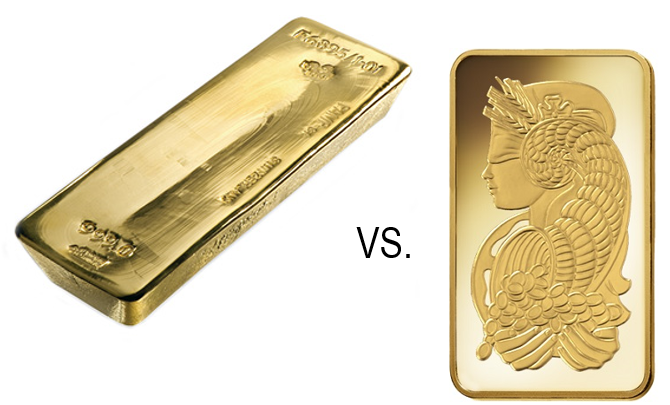A common question we get in the shop is whether the gold bars we sell are poured or pressed, and if there’s a difference when purchasing one or the other. In this post we’ll explain these processes for making gold bullion and the characteristics of ingots formed by pouring vs by pressing.
The bars we make from all the precious metals we buy are made using the pouring method. You can watch each step in this process on our YouTube channel. To make poured ingots, gold from a variety of sources is mixed together, melted, and refined of impurities before being poured into a mold or cast where it cools into a solid ingot. The process gives every poured bar its own unique surface texture – which is preserved through minimal polishing and post-processing. This “natural” or “raw” looking aesthetic makes poured gold bars appealing to some investors and collectors.
Pressed bars are made from a single source of gold, such as a large poured ingot. The source gold is extruded to a specified thickness, then cut into individual bars that are pressed with a die to emboss the weight, purity, and source. The pressed bars are then polished to a glossy finish before being packaged for sale.
From a manufacturing standpoint, pressing is the less resource intensive process that provides refineries with more control over quality and uniformity. But when making large gold ingots (i.e. greater than 100 oz), pouring is much more efficient. If you compared gold ingots to cookies, then the pouring method is like making one big cookie from scratch and the pressing method is like buying a tube of cookie dough and slicing off the number of cookies you want to make.
You can find examples of poured and pressed gold ingots in our bullion store. All of our variable weight bars are poured ingots and all fixed weight bars are pressed ingots.












